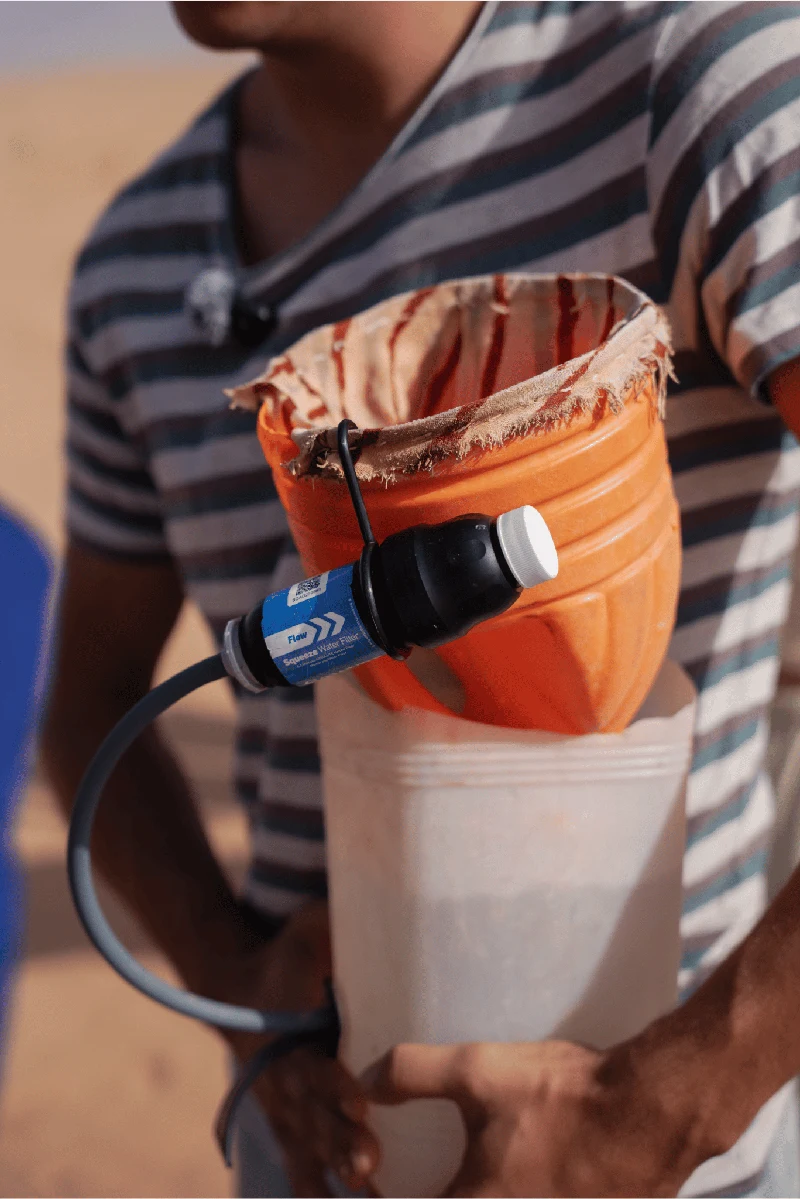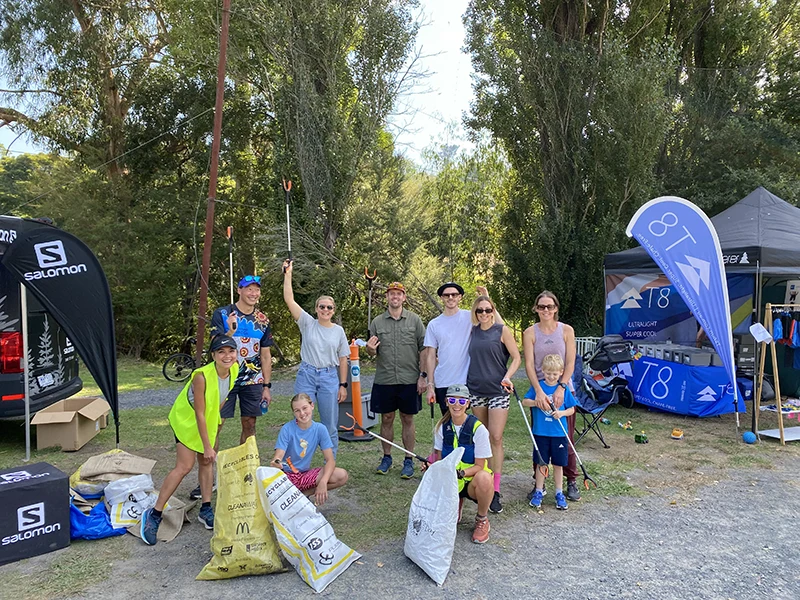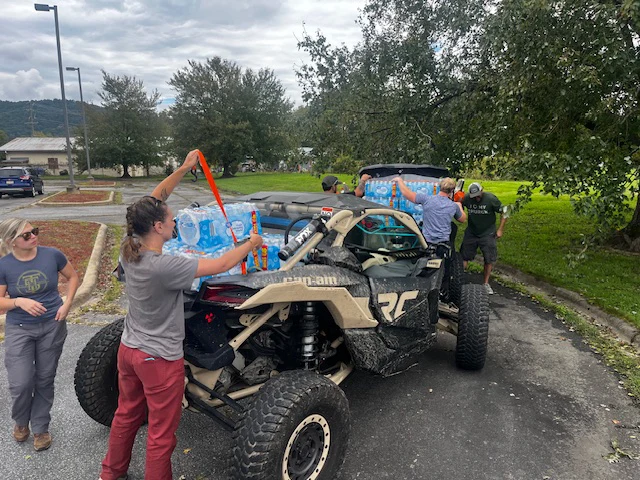

The Pfiffner Traverse is a 78-mile high route that attempts to follow the Continental Divide from Milner Pass in Rocky Mountain National Park to Berthoud Pass near Winter Park, Colorado. It involves steep elevation gain and loss and up to 40% off-trail travel.
This August, my hiking partner, Leslie, and I attempted this high route over the course of seven days and six nights.

Our actual route ended up being more like 90 miles with 25,000 feet of total elevation gain because of reroutes due to weather, fire, and our decision to avoid the most technical part of the route. As both of our first high routes, the Pfiffner Traverse was initially a daunting challenge. But as we traversed the divide, my fear quickly turned into confidence and the experience left me hungry for more off trail challenges in the high alpine.

Pfiffner Traverse Day 1: 8.6 miles, 2,178 ft of gain
On day one, we were reminded of the inevitable volatility of Colorado mountain weather. Almost immediately, we were forced to reroute from traversing the divide atop Mt.Ida, to a lower route safe from thunderstorms and hail. Luckily, we were able to reach our first campsite easily by following a short section of the Continental Divide Trail. We walked through a burn area full of beautiful regrowth and plenty of wild raspberries. When we arrived at camp, we were treated to one final and intense hail storm. We prepared for the next morning and extended time above the treeline by reviewing maps and deciding on an early wake up time.
Pfiffner Traverse Day 2: 10.8 miles, 2,313 ft of gain
As planned, we woke up early for the start of day two but we were temporarily delayed by some unexpected visitors.
Three bull moose were seeking food in some of the only live trees in the area and paid an extended visit to our campsite.

When they finally walked through, allowing us to emerge from our tree cover, we gathered our backpacks and continued our hike along the CDT over Ptarmigan Pass. Bighorn Flats was beautiful, open, and exposed which made me grateful for an early start as clouds began to roll in once again.
With only about ten miles to cover before our next reserved site, we arrived rather early. After chatting with a ranger who asked to see our permits, we pitched our tents and began to filter water for the next day. As we laid out our maps, we assessed the challenge that lay ahead — primarily off trail travel, three mountain passes and a very healthy amount of elevation gain.

Pfiffner Traverse Day 3: 13.5 miles, 5,213 ft of gain
We started day three even earlier to give ourselves ample time for off-trail travel, route finding and 5,200 feet of climbing. After a 1,400 foot climb to Lake Nanita and Lake Nokoni, we finally began our off trail travel to Beak Pass. The initial climb proved to be challenging and a good taste of what was to come. When Beak Pass was finally in view, we crossed a large talus field to reach the base. The vertical change was intense but the climb was gorgeous and before long we had reached the top.
The real challenge of this pass lay in the descent.

It was a steep bushwack through beetle-killed tree blowdowns toward an out-of-sight lake. From there, we began making our way toward Isolation Peak Pass — the gateway to Paradise Park — an area of Rocky Mountain that is uniquely preserved with no trail or road access. I wish we could have spent more time there, but the sun was setting and we had one more climb before our day was over.
Paradise Pass looked to be the steepest yet and the eroded elk trails we followed to the top showed us just how much better equipped the elk are for this terrain.

When we finally reached camp, we reflected on all we had accomplished. The morning felt like a lifetime away and the distance from our previous night’s site matched the growth in confidence we both felt. We were ready for rest and ready to tackle what still lay ahead.
Pfiffner Traverse Day 4:
12.6 miles, 3,141 ft of gain
The beginning of day four held 1,100 feet of gain in just four tenths of a mile.

We ascended Cooper Peak Pass slowly with the rising sun — first on steep tundra and then on loose scree — before finally reaching the top. The descent was even slower and looser, but it led to a beautiful, seldom-visited basin in Indian Peaks Wilderness. We took our time skirting Island Lake and making our way to another on-trail section of the route. This is where we decided to bypass a more technical section, Paiute Pass.
Since it was both of our first high routes, we felt it was better to put ego aside and tackle the pass once we felt more ready for that challenge.

We spent the rest of the afternoon on trail making our way to our campsite in Lone Eagle Cirque. From here, we were also able to scope out the most technical feature of the route, Northeast Gully, and decided to bypass that as well. Steep snow travel is neither my or Leslie’s favorite. We were still grateful we had seen it for ourselves and got to see the incredible Crater Lake — even if it meant quite a bit of additional and unnecessary mileage.

Pfiffner Traverse Day 5: 24.2 miles, 5,190 ft of gain
Due to bypassing Northeast Gully and the Devil’s Thumb Fire, we had a long hike on day five. We started early and enjoyed four miles of downhill accompanied by ripe thimbleberries and lots of day hikers. We eventually joined the Arapaho Pass Trail and climbed 4,000 feet over 10 miles — a nice contrast to the climbs from the last few days. Eventually, we made it all the way up to Arapahoe Pass. It provided 360 degree views with a well graded descent — though my knees were feeling all of the downs at this point.

We continued toward Jasper Lake, and ran into a young bull elk before spotting an entire herd on a distant hill side.
It was a fabulous way to end another challenging and rewarding day.

Pffifner Traverse Day 6: 10.5 miles, 2,500 ft of gain
Day six of the Pfiffner Traverse was short due to camping logistics, but the break was welcome. In the morning we climbed up to Devil’s Thumb Pass to rejoin the primary route and spent the rest of the day almost directly on the divide.
We enjoyed the views while attempting to make good time to avoid yet another bout of afternoon storms.

We walked through Rollins Pass where trail crews were out in full force, and we peered over the divide at glacial lakes. As the clouds darkened, we raced to Rogers Pass where we descended to camp. We set up just as the rain started and I enjoyed a much needed afternoon nap before preparing for our final day.
Pfiffner Traverse Day 7: 10.5 miles, 4,518 ft of gain
On day seven of the Pfiffner Traverse, we crossed the James Peak Skyline.
Anticipation was high with five 13,000 foot peaks in ten miles and basically no bailout options after the first summit.

We started our climb well before sunrise in hopes of beating the weather to Berthoud Pass. We were rewarded for our early rise with an incredible sunrise on the divide and a once-in-a-lifetime cloud inversion.

We scrambled through the col between James and Mt. Bancroft as clouds rolled in from the east. When I got over the fear of losing visibility, the clouds proved to be one of the best parts of the entire trip. From Parry, our third 13er, we watched as they rolled over the col we’d just crossed and spilled over the west side of the divide. The climb to Eva was quick as we looked toward the summit of Flora apprehensively.
Dark clouds gathered above the out-of-sight summit, but the only way out was through.

We pulled together whatever energy we had left and finished our final climb of the entire traverse. After a brief celebration, we raced back to the car at Berthoud Pass and arrived with a newfound sense of confidence in our backcountry abilities. I was even thankful for the various reroutes, knowing they meant I’d certainly be back for more.

From the Squad
Campfire conversations with our community, from Squad Members and Ambassadors to Brand Partners and the Sawyer team.

















